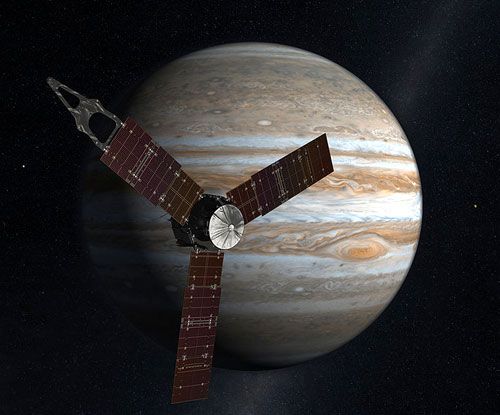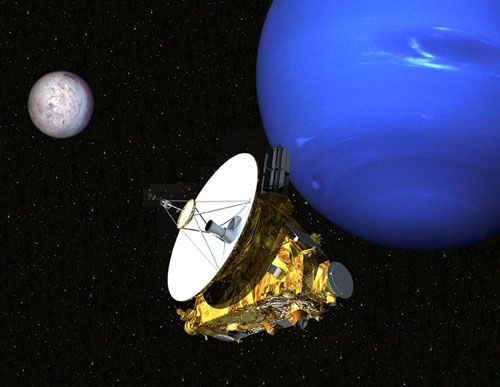
NASA / APL
Like New Horizons, Argo would be classed as a ‘New Frontiers’ mission if approved during NASA’s fourth Announcement of Opportunity (AO) for the program in 2013. The Argo project could’ve been submitted this year (for NASA’s third AO; New Horizons was selected in the first AO in 2001, and a mission called Juno was picked during the second AO in 2005), but the flight relies on being powered by a nuclear generator using plutonium-238 fuel...which is on low supply right now and would not be available again till maybe 2014 (when funding on Argo would start if it was greenlit). The U.S. Department of Energy is now restarting its program to make plutonium-238 for future NASA deep space missions. In terms of NASA’s third AO, the winning finalist will be selected in Fall of 2010, with the mission launching no earlier than 2015 and no later than 2018. Juno is the next New Frontiers mission that is officially scheduled for lift-off in August of 2011, and will arrive at Jupiter in 2016.

NASA / JPL
If Argo was approved by NASA, its first launch window would come in February of 2019...with it flying past Jupiter in June of 2020 and Saturn in February of 2022 for gravity assists, reaching Neptune in June of 2028 and heading towards its first KBO (speaking of which, Triton may be one that was captured by Neptune's immense gravity earlier in its past) in May of 2032. Another option involves Argo launching in February of 2019, flying past Jupiter in June of 2020 and Saturn in April of 2022, reaching Neptune in April of 2029 and approaching a KBO in March of 2034. Do the math, and you’ll see that the first launch option involves a 9.3-year flight, while the second option involves a 10.2-year flight. I think you can guess which travel time the project’s scientists would prefer.

Craig Agnor, Steve Albers, Jerry Gardner, James Hastings-Trew, Constantine Thomas, and NOAA's Science on a
Sphere project
With all that background information aside, I think you can also guess why I typed this Blog about Argo. Not to sound like a broken record (again and again and again...), but this is INDEED my next chance to have my name fly out of the solar system onboard an unmanned space probe. I really shouldn’t get my hopes up for this flight to be selected in 2013...since I was hoping like hell that NASA would move forward with the New Horizons 2 mission a few years ago. NH 2 would’ve been launched between 2008 and 2009, and arrive at Uranus by 2017. Unfortunately, a lack of plutonium fuel and low priority placed on the mission by scientists was what prevented NH2 from ever taking off. I would TOTALLY be ecstatic if Argo was given a ‘Go’ by NASA. Of course, if you clicked on that last link that was provided in this paragraph, you'd already assume that.

NASA / APL & JPL / McParno

No comments:
Post a Comment